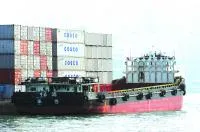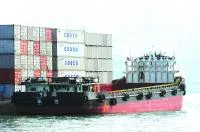Singapore
Money: It's not funny
Money: It's not funny
To the unemployed person the unemployment rate is always 100%. And with the recent retrenchments and hiring freezes around town, the odds of finding a job are akin to winning the lottery. So despite rumours floating around town that the economy is about to pick and many firms will begin to hire once again, why is it extremely difficult for anyone to land a job? The Singapore Business Review speaks exclusively to the region’s top human resources, recruitment and consulting firms and lets you in on the truth surrounding most companies managing their headcount, the hiring trends in 2009 and where the job market intends to go this year and how you could just land that dream job.
Resorts World could hold the aces
Out of the two integrated resorts that may be opening at the end of the year, Genting Singapore’s Resort World may have the upper hand over Marina Bay Sands when i t comes to packing in the local punters. And the secret to what may be the key to Resorts World getting the upper hand could just be the Universal Studios movie theme park. Analysts from DBS Vickers Securities believe that Universal Studios may be the key to attract Singapore’s mass market, and Genting’s strength in the mass market.
1,500 APEC leaders to participate in APEC CEO Summit next week
The APEC CEO Summit to be held in Singapore next week has 1,500 participants confirmed to attend. This is the largest attendance in record for the event since its inception in 1996.
iPhone could ring up profits for M1
Keppel Land’s head honcho Kevin Wong has a good reason to smile. Not only did Keppel Land report a strong set of figures for that period, it exceeded most analysts’ expectations.
Black, white but no red ink
The black ink continued to flow over at SPH, albeit not as quickly as last year as the downturn in advertising bit into revenues. But at least there was no red ink for the newspaper-cum-property development group, which saw rental income from its Paragon department store help it post a respectable full year profit of $497 million, which was down just under 1% on 2008.
Down and out in the CBD
It is a long way down from the top of the office buildings that ring Raffles Place, and so it has been for the rents their landlords command. At the height of the property squeeze in September 2008 one tenant with impeccable timing, signed up to pay $23 psf for some space in Republic Plaza. Had he waited a year, he could have gotten the same space in the same building for $9.50 psf.
Why ban the financial institutions now?
Not all the cranes dottting Singapore’s Marina Bay skyline are building the the integrated resort. Many are, in fact, building ever more grade-A office space in the financial district and beyond. So much new supply is coming online in Singapore that analysts estimate the vacancy rate could hit an historic high of 25 % by 2011. That, coupled with the current downturn and a desire to shift to cheaper localtions like Changi, has seen CBD rents fall by as much as 25 %. Tay Huey Ying, Director of Research and Advisory of Colliers International said demand for office space contracted for the third consecutive quarter in 2Q 2009 by 248,000 sq ft. “Firms battered by the financial crisis continued to downsize and give up their office space. Coupled with the large impending supply, rents continued to free-fall in 2Q 2009 to average at S$6.73 per sq ft per month for Grade A offices in the CBD. For the first half of 2009, average rents of Grade A office space in the CBD have fallen some 41.5%, bringing rents back to mid-2006’s level,” shes said. So what does this mean for CBD office rents and how should potential tenants assess the market?
CBD rents under pressure
Not all the cranes dottting Singapore’s Marina Bay skyline are building the the integrated resort. Many are, in fact, building ever more grade-A office space in the financial district and beyond. So much new supply is coming online in Singapore that analysts estimate the vacancy rate could hit an historic high of 25 % by 2011. That, coupled with the current downturn and a desire to shift to cheaper localtions like Changi, has seen CBD rents fall by as much as 25 %. Tay Huey Ying, Director of Research and Advisory of Colliers International said demand for office space contracted for the third consecutive quarter in 2Q 2009 by 248,000 sq ft. “Firms battered by the financial crisis continued to downsize and give up their office space. Coupled with the large impending supply, rents continued to free-fall in 2Q 2009 to average at S$6.73 per sq ft per month for Grade A offices in the CBD. For the first half of 2009, average rents of Grade A office space in the CBD have fallen some 41.5%, bringing rents back to mid-2006’s level,” shes said. So what does this mean for CBD office rents and how should potential tenants assess the market? According to a research note from Credit Suisse, CBD rents for a grade A building may fall a further 14 % to $9.20 by the end of this year and will keep falling until the bottom out at $7/sq ft in 2011.Then there is the ‘shadow space’, which is when the tenant sublets, and there is a lot of supply coming onto the market as companies downsize central business district operations. Empty offices According to research from CB Richard Ellis, the weakening of prime office demand during the last quarter could leave the new office space in the works empty for the short term at least. “Singapore is home to the Asian headquarters of a large number of MNCs and consequently saw the further weakening of prime office demand during the quarter. Prime rents have now fallen 46.6% from the peak recorded in the third quarter of 2008, and occupancy rates will continue to face pressure from substantial new supply. Singapore has some 7.98 million sf of new office space in the development pipeline between now and 2013 and it seems certain that for the short term at least, supply will continue to outstrip demand,” said a CB Richard Ellis spokesperson.
Will SingTel's soccer grab crush Starhub?
Singtel may have won the screening rights for the English Premier League soccer, but will it be worth the price? In terms of recouping the rights fees in subscription revenues, most analysts agree this is a lousy deal for SingTel. Analysts estimate the telecom company has agreed to pay around $350 million over three years, but the firm says it plans to charge subscribers just $23 a month. It would need to sell 4.2 million subscriptions to recoup its investment, which is more than there are households in Singapore. The market for cable subscriptions stands at just 630,000 as at June 2009, and of that Starhub had 530,000, of which half are reckoned to subscribe to its sports channel.
Will Keppel samba its way to the bank?
If you were in charge at Keppel Corporation, now would be the time to take a cue from Tom Cruise in Jerry Maguire and yell at the top of your voice, “Show me the money!” One of the largest offshore and marine groups in the world finally has the go ahead for a rigs costing, an eye-popping US$1.2 billion for Skeie Drilling to go ahead. And Lim Siew Khee, an analyst from CIMB-GK believes that it is unlikely for the three N-class jack-up harsh environment rigs for Skeie Drilling to be cancelled given the positive development with the restructuring and consensual agreement reached with bondholders. And that isn’t all, there is news that Keppel and WTorre are currently in talks surrounding the possible acquisition of Estaleiro Rio Grande (ERG) shipyard in Brazil. Now what is the big deal about ERG that makes Keppel wants to take over the shipyard? Well, according to Lim, ERG is designated to build eight FPSO hulls for Petrobras which could potentially add a sweet US$4 billion (or US$500 million per hull) to Keppel’s order book of S$9.5 billion. Add the $1.47 billion from Petrochina brought about from the sale of SPC which has strengthened Keppel’s cash position, which Lim believes is likely to be deployed for Infrastructure M&As and may be preserved as buffer for potential aid to rig customers with financing difficulties. The recent equity raising has also alleviated funding overhang for Keppel Land. While Keppel Land has indicated that part of the proceeds could be used to pursue strategic acquisitions, we believe that any potential M&A is still in the infancy stage. In the near term, we see the bulk of the proceeds could be channelled to development capex and capital-management initiatives. Recall that office developments in progress include Marina Bay Financial Centre 1 & 2 and Ocean Financial Centre. Sentiment in the sector has since recovered, with transaction volumes improved dramatically over the last four months. Successful new launches in both China and Singapore could further augment Keppel Land’s balance sheet health. This may just make the management from Keppel Corporation much happier than a group of eighteen-year-old boys left unsupervised at the Playboy mansion. F&N on a sugar high Frasier & Neave, or F&N for short, has hit a sweet spot not only for their famed canned but also for property. According to analysts from DBS Group, recent launches by the Group have met with overwhelming response in terms of units sold and ASPs. The latest being 8@Woodleigh, which sold 90% of the units over its soft launch last weekend at ASPs of S$770 per square foot, 10% above industry observers’ expectations. Higher-end projects such as Martin Place Residences also met with keen response, at ASPs between S$1,450 per square foot to S$1,700 per square foot, much higher than the S$1,250 per square foot that industry analysts had anticipated.And it isn’t only in the local property market that F&N is seeing significant growth. Recent positive property sentiment in China could also bode well for the corporations developments in the People’s Republic.Apart from overwhelming property sales, Frasier & Neave also has a current landbank of 930 attributable units in Singapore which according to analysts from DBS Group is relatively low. The same analysts from DBS Singapore Research Team say that the F&N Group will be looking to acquire land, particularly from URA’s Reserve List GLS. This possible acquisition of land could be a catalyst for the counter, if it materialises, as it first of all signals a positive on-the-ground view of the property market and will prompt an upward revision on RNAVs. Strait and Narrow Straits Asia Resources (SAR), the first pure mining company to be listed in Singapore, has seen its share price more than double since March which is in tandem with the resurgence of oil prices. The impact of global economic stimulus plans has started to flow into the real economy, leading to tighter energy markets. Improvements in fundamentals bode well for SAR, as firmer coal prices will boost its revenue. Management holds the view that energy markets will continue to tighten in the second half of this year and is optimistic that its 2010 financial year output will be priced at more favourable levels than recent spot prices of around US$60 per ton.
Property's double act
The great financial recession may have knocked the economy for six, but the residential property market has seemingly defied all logic and staged a dramatic comeback.
M1, Olam seize the moment
If what’s being said about there being boundless opportunities in this recession is true, then MobileOne’s (M1) Chief Executive Officer Karen Kooi must be relishing the challenge to make the Telco one of the region’s largest. And she is not waiting any longer to let the rest of the players in the know that she means business. First off, in a three-part initiative that shows signs of better execution, M1 has renegotiated lower network maintenance fee for the 2009 financial year, which is expected to save the company a whopping S$10m. Also even though the M1’s market share of 25.4% may have hit its bottom in the first quarter of this year, Kooi and her team have started to focus on high-end post paid plans such as M1’s Take 3 plan, which provides customers with an attractive handset subsidy to high-end users as it would be able to amortize the handset subsidy over 21 months instead of having to expense off immediately. And finally M1 has also launched very competitive data plans in June ‘09, as its own backhaul capacity starts to kick in, implying stable leasing costs despite traffic increase. Now thanks to these three initiatives, analysts from DBS Group Research, Singapore research team are buzzing at the potential cost savings that M1 can achieve. “In the fourth quarter of 2008 and the first quarter of 2009, M1 saved S$5m in each quarter in staff costs through headcount freeze, job credit scheme and lower bonuses, which may possibly continue till top line growth enters into the positive territory. In addition, M1 saved about S$3m in facilities expenses in the first quarter of this year, mainly due to lower network maintenance fee for FY09F. Overall, annual cost savings of S$25-30m in the 2009 financial year should compensate for revenue decline of S$20-25m, leading to stable financial year 2009 earnings, in our view,” said the DBS Group Research Team in a note. on Olam International. Continuing on the theme of opportunities in a recession is Olam International’s CEO Sunny Verghese, whose firm has won the bid to purchase selected assets of major U.S. tomato processor SK Foods and its wholly owned subsidiary RHM. Industrial/Specialty Foods, in California after a Chapter 11 auction which has been approved by the United States Bankruptcy Court in Sacramento for a cool US$39m. On June 24, 2009, Olam had signed a “stalking horse” asset purchase agreement for the acquisition. The next day the Trustee declared Olam the successful bidder and its agreement was approved by the Court on June 26, 2009. The court has stipulated a closing period of 11 days from the date of its approval, and hence the acquisition is expected to close by July 10, 2009. Now the reasoning behind the acquisition according to CIMB-GK’s Ho Choon Seng is that the acquisition will expand its product range. “Olam says the acquisition will expand its product range with cross-selling opportunities. It will also offer cost savings from the consolidation of logistics and general functions, and an immediate entry into a large and profitable market. The acquisition price of US$39m is, moreover, significantly lower than the replacement cost of US$130m,” said Ho. And it is because of this that cash from its recent fundraising has put the company in a strong position to snap up further attractive assets at distress prices to gain market share and break into new markets.
Shipping firms feel seasick
With Singapore’s economy recovering one would have thought that its shipping companies would have been sailing into calmer waters. Not so, as the results of shipping companies has shown that the perfect storm in shipping rates and volumes continues to batter results. Indeed, Singapore’s largest shipping company, Neptune Orient Lines, continued to flounder on even weaker cargo rates. To June this year cargo rates were down 28.9 per cent year on year and not surprisingly this led the company to report a 38 per cent revenue slump on August 7 which pushed it deep into the red. If there was a silver lining it was that the rate of volume slowdown reduced, albeit marginally, but the reality is shipping volumes in Asia are just not picking up across the board. Faced with an oversupply of ships, this continues to put pressure on shipping rates. So what’s going on?
No more Mr. Kiasu
In the popular imagination, the average Singaporean is a cigarette smoking, white singlet-wearing, 45 year old ‘uncle’ who wears flip flops and drinks Tiger with his ‘kakis’ at the local hawker centre. But thanks to a survey done by stockbroker CLSA, we now know that Mr Singapore is, in fact, under 40, hankers for a BMW rather than a Mercedes, has a diploma level or higher education, and still believes property makes the best investment. But the global financial crisis has not been kind to Mr Singapore, who saw his average income decrease by 10 % over the year and whose key concern is a rising foreign population that may lead him to lose his job. In the same survey done in 2007, most Singaporeans were worried that rising numbers of foreigners would increase the cost of living.
Empty vessels don't make waves
With the shipping industry in the doldrums, we speak to Raymon Krishnan, President of the Logistics & Supply Chain Management Society and Alex Schulz from Safe Haven Maritime discusses the increase in laid up vessel at OPL.
En-blocs struggle as market rebounds
Next to winning the Toto, having your apartment go on en bloc is the next best thing every Singaporean dreams of.Those dreams may now be getting a little closer as major developers have rushed back into the market from the middle of this year. Developers snapped up $4.51 billion of property to add to land banks in the three months to September, which was more than the preceding year combined. Not surprisingly, it is still well below the mid term peak of $12.8 billion reached during the height of the market boom in third quarter of 2007.
Yahoo! Appoints New Head for Mobile in Southeast Asia
Yahoo! has appointed Tommaso del Re as the new Head of Yahoo! Mobile, Southeast Asia, tasked with managing all business aspects of Yahoo! Mobile including product distribution, mobile carrier partnerships and mobile advertising across Singapore, Malaysia, Thailand, Philippines, Indonesia and Vietnam.











 Advertise
Advertise







